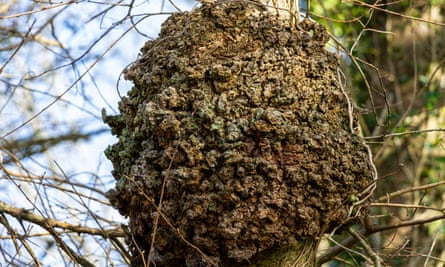PROTECT YOUR DNA WITH QUANTUM TECHNOLOGY
Orgo-Life the new way to the future Advertising by AdpathwayAs the light began to fade, we loitered on the path, hoping to spot marsh harriers drifting in to roost in the reedbeds. I was soon distracted by a family party of long-tailed tits foraging in a stand of silver birches, their lollipop stick tails flitting like leaves blowing in a breeze.
As I followed the ripple of movement through the bare branches, I noticed that one mature tree was studded with witches’ broom galls. Each emerging from a single point on a branch, these dense clusters of twigs resembled scrappily constructed pigeon nests or, as the name suggests, traditional besom broom heads. They can be caused by insects, mites, fungi or bacteria, but the most common culprit affecting birches is Taphrina betulina, a fungal pathogen.

This fungus produces specific chemicals that trigger numerous dormant buds to flush. These then grow rapidly, eventually developing into densely branched spheres. Infected twigs have onion-shaped swellings at the base of their side shoots. In early summer, asci (specialised sac-like structures in which spores develop) will form on the underside of the leaves. These contain hyaline (transparent) spores, which begin to germinate before being shot out into the air to disperse and infect new plant tissue. As the fungus overwinters in the bark and buds, witches’ brooms can survive for many years, growing up to a metre in diameter.
The largest of this tree’s specimens were about the size of footballs, but higher in the canopy, a thick bough had been completely engulfed by a different type of distorted growth – an enormous crown gall. The knobbly swelling was the pale brown of dried mud, with a rough, corky appearance. The damper, north-facing side had been colonised by emerald green cushion moss and lacy eau de nil lichen.
Crown galls are essentially benign tumours, occurring following infection by the soil-borne bacterium Agrobacterium tumefaciens, which injects its DNA into the tree’s cells, causing uncontrolled growth. Both of these oddities are parasites. Though they can weaken host trees by disrupting the flow of water and nutrients through the branches, making them more susceptible to environmental stress, they rarely cause serious harm to their long‑term health.


 4 months ago
39
4 months ago
39





















 English (US) ·
English (US) ·  French (CA) ·
French (CA) ·